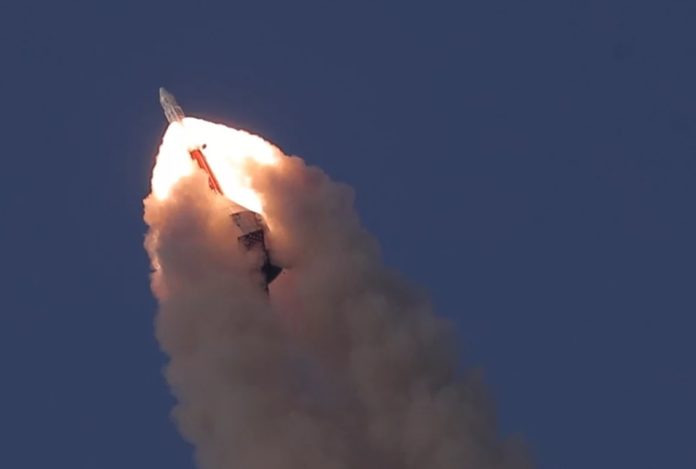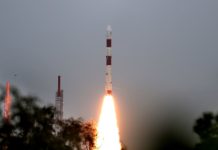ISRO carried out a major technology demonstration today (July 05, 2018), the first in a series of tests to qualify a Crew Escape System, which is a critical technology relevant for human spaceflight, according to its press release.
The Crew Escape System is an emergency escape measure designed to quickly pull the crew module along with the astronauts to a safe distance from the launch vehicle in the event of a launch abort. The first test (Pad Abort Test) demonstrated the safe recovery of the crew module in case of any exigency at the launch pad.
After a smooth countdown of 5 hours, the Crew Escape System along with the simulated crew module with a mass of 12.6 tonnes, lifted off at 07.00 AM (IST) at the opening of the launch window from its pad at Satish Dhawan Space Centre, Sriharikota today. The test was over in 259 seconds, during which the Crew Escape System along with crew module soared skyward, then arced out over the Bay of Bengal and floated back to Earth under its parachutes about 2.9 km from Sriharikota.
The crew module reached an altitude of nearly 2.7 km under the power of its seven specifically designed quick acting solid motors to take away the crew module to a safe distance without exceeding the safe g-levels. Nearly 300 sensors recorded various mission performance parameters during the test flight. Three recovery boats are being exercised to retrieve the module as part of the recovery protocol.
The Indian Human Spaceflight Programme (HSP) is a proposal by ISRO to develop and launch the ISRO Orbital Vehicle, which would carry a two-member crew to the Low Earth Orbit. The programme envisages the development of a fully autonomous orbital vehicle carrying two crew members to about 300 km low earth orbit and their safe return. The spaceship would be launched by the GSLV MkIII launcher. Pre-project activities have been initiated to study and develop critical technologies for this mission
A demonstration of the atmospheric re-entry flight of the proto crew module developed for the Human Spaceflight Programme was successfully carried as part of the experimental flight of LVM3 on December 18, 2014. This was used as a platform for testing the atmospheric re-entry technologies envisaged for crew module and also for validating the performance of end to end parachute based deceleration system. In CARE mission the crew module got separated from the launch vehicle at an altitude of 126 km and re-entered the Earth’s atmosphere at an altitude of 80 km and further descended in the ballistic mode. Three axis control was provided for damping out the rates and for ensuring zero degree angle of attack during re-entry.







